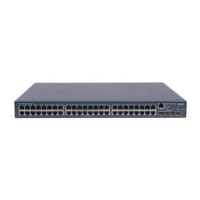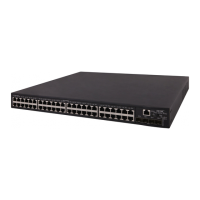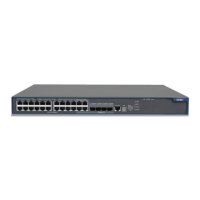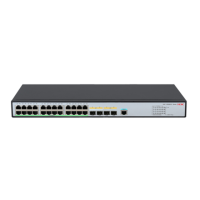1-22
Use the stp edged-port disable command to configure the port(s) as a non-edge port or non-edge
ports.
Use the undo stp edged-port command to restore the default.
All ports are non-edge ports by default.
Note that:
z Configured in Layer 2 Ethernet port view, the setting takes effect on the current port only;
configured in port group view, the setting takes effect on all ports in the port group.
z Configured in Layer 2 aggregate port view, the setting takes effect only on the aggregate port;
configured on a member port in an aggregation group, the setting can take effect only after the port
leaves the aggregation group.
z If a port directly connects to a user terminal rather than another device or a shared LAN segment,
this port is regarded as an edge port. When the network topology changes, an edge port will not
cause a temporary loop. Therefore, configuring a port as an edge port can enable the port to
transition to the forwarding state rapidly. We recommend that you configure a port directly
connecting to a user terminal as an edge port to enable it to transition to the forwarding state
rapidly.
z Normally, configuration BPDUs from other devices will not be received by an edge port because it
does not connect to any other device. Before the BPDU guard function is enabled, if a port receives
a configuration BPDU, the port is working actually as a non-edge port even if you have configured
it as an edge port.
z Among loop guard, root guard and edge port settings, only one function (whichever is configured
the earliest) can take effect on a port at the same time.
Related commands: stp loop-protection, stp root-protection.
Examples
# Configure GigabitEthernet 1/0/1 as an edge port.
<Sysname> system-view
[Sysname] interface gigabitethernet 1/0/1
[Sysname-GigabitEthernet1/0/1] stp edged-port enable
stp enable
Syntax
stp enable
undo stp enable
View
System view, Layer 2 Ethernet port view, port group view, Layer 2 aggregate port view
Default Level
2: System level
Parameters
None

